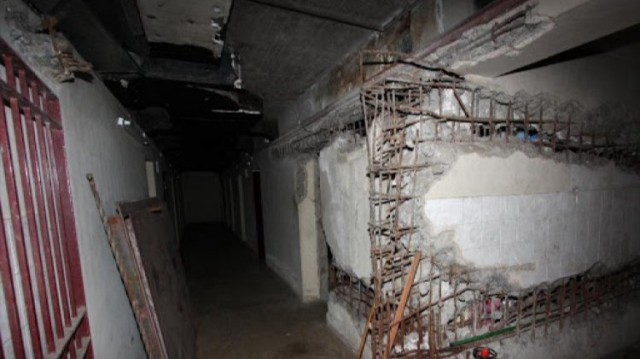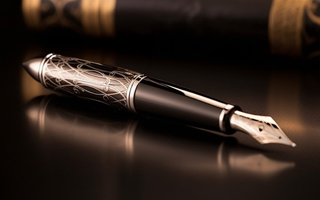
Anadolu team captures footage of intelligence center in Syrian capital built over torture dungeons
After the fall of Syria's 61-year-old Baath regime, Anadolu filmed a torture and intelligence center in the Syrian capital, revealing the Assad family's abuses.
Located in Damascus's Kafr Sousa district, the intelligence headquarters of the Bashar Assad regime, nestled among ministries and government buildings, conceals underground torture chambers that once served as a symbol of fear and oppression for Syrians.
Inside the center, statues and images of Hafez Assad and his son Bashar, once symbols of the regime, were seen destroyed, reflecting the fall of the government on Dec. 8.
Below the unassuming government building, dungeons were used to detain not only Syrians but also captives from other nations, a grim testament to the regime's legacy of repression.
-Evidence of torture and fear
Inside the complex, personal identification documents, criminal records and belongings of detainees remain scattered. Among the items found was an Istanbul Card, or public transport card, used by a Syrian refugee in Türkiye.
Ropes suspected to have been used for torture still hang from the walls, underscoring the brutal practices carried out here.
Descending into the dungeons reveals overcrowded cells and converted isolation chambers.
Thin blankets on cold stone floors, along with food containers and clothing, paint a grim picture of the conditions. Prisoners left behind soap-carved writings and drawings, clinging to fragments of hope during their captivity.
Traditional Turkish-style toilets had been repurposed into isolation cells where detainees awaiting execution were reportedly held. These cells, equipped with only a blanket and a small ceiling hole for light, embodied inhumane treatment.
-Marks of survival
Prisoners marked their days with makeshift sundials on walls and soap-carved calendars.
Drawings depicting rural life, mosques, birds and symbols like a Zulfiqar sword adorned the walls of larger cells. Words in multiple languages including Turkish, English and Russian reflected the diverse backgrounds of the detainees.
In one cell, dozens of Turkish verbs in their infinitive forms, such as “to love” and “to walk,” were etched into the walls, symbolizing attempts to hold onto a sense of humanity.
Interrogation rooms in the complex revealed more signs of systematic abuse. A plastic pipe believed to have been used for torture was found in one room.
A backdrop curtain, chair and ceiling-mounted spotlights indicated that interrogations were recorded. Official documents listing interrogators, dates and detainees' statements extracted under duress were left behind.
Above the dungeons, a multi-story administrative building housed the regime's bureaucracy. Opposition sources said regime forces set fire to parts of the archive before fleeing, though hundreds of records documenting detainees remain intact.
-‘No dreams left in Syria'
A Syrian opposition member searching for his father, who disappeared in 2012 under the Assad regime, shared his anguish with Anadolu.
Another opposition fighter accompanying the Anadolu team broke down when asked about his dreams after the regime's fall. “There are no dreams left in Syria. After seeing these dungeons, can anyone dream?” he said.
Bashar al-Assad, Syria's leader for nearly 25 years, fled to Russia after anti-regime groups took control of Damascus on Dec. 8, ending the Baath Party regime, which had been in power since 1963.
The takeover came after Hayat Tahrir al-Sham (HTS) fighters captured key cities in a lightning offensive that lasted less than two weeks.
Hello, the comments you share on our site are a valuable resource for other users. Please respect other users and different opinions. Do not use rude, offensive, derogatory, or discriminatory language.
The floor is all yours.








